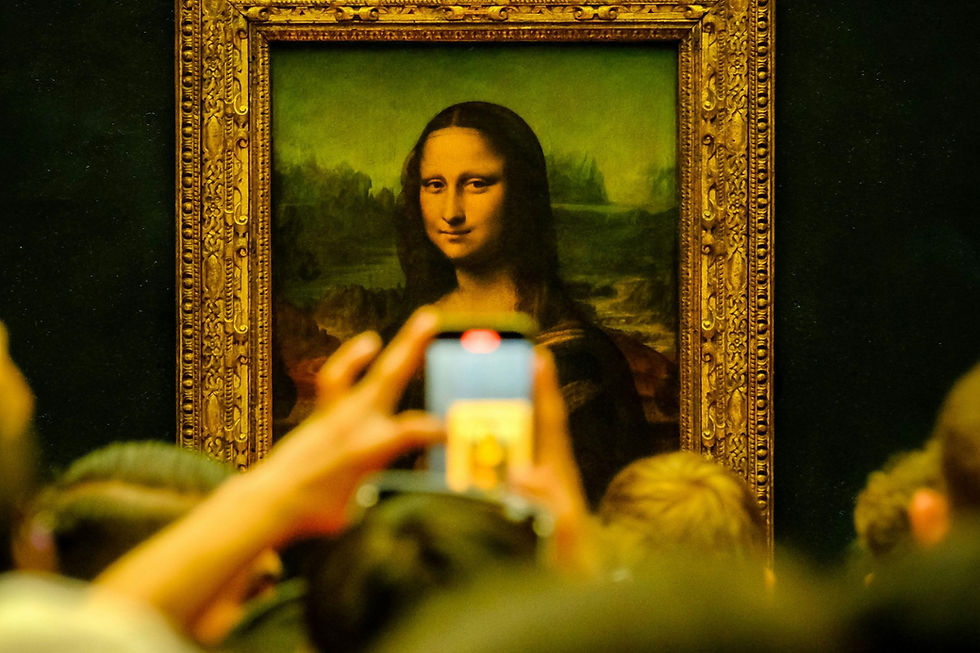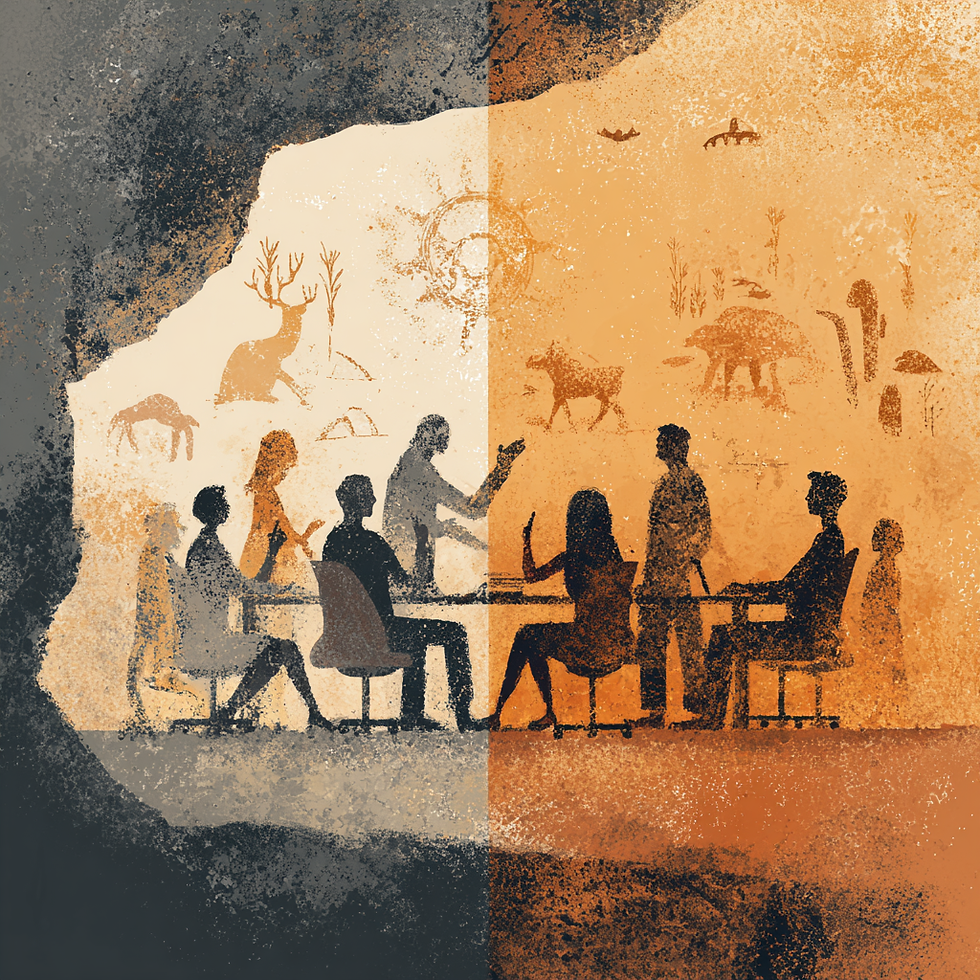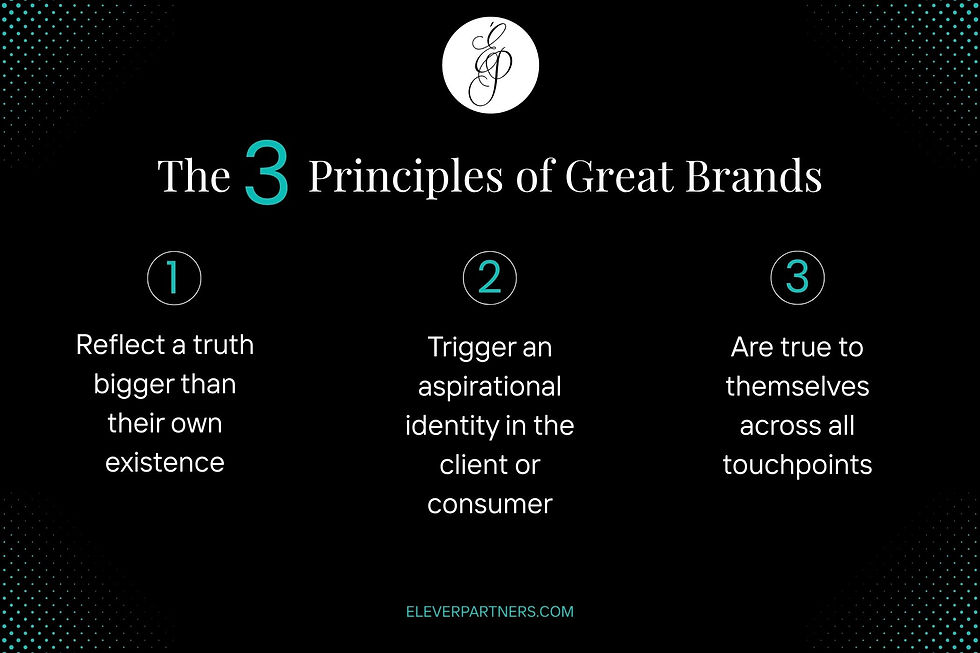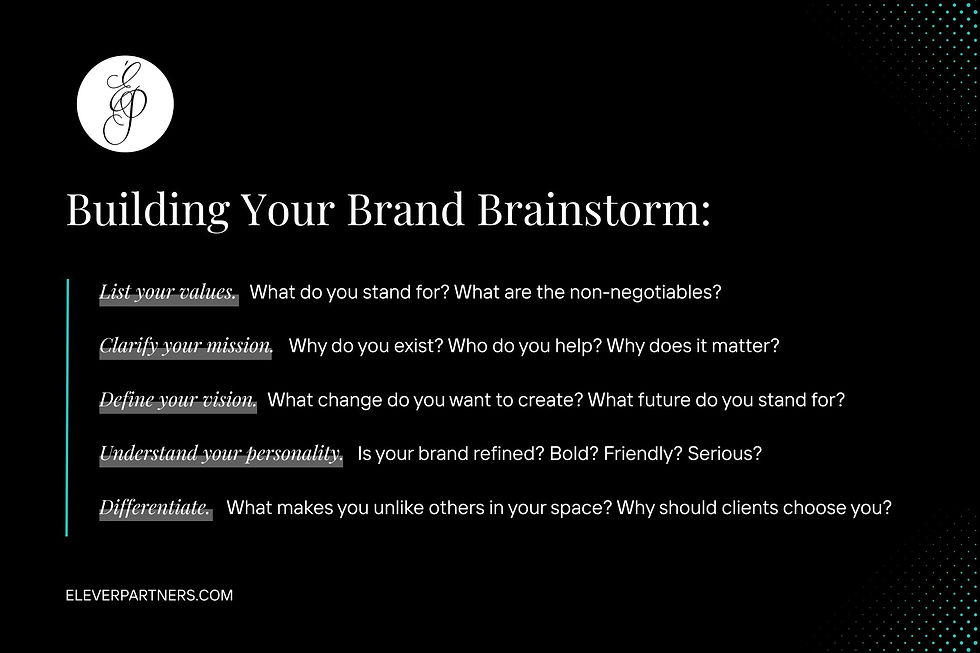Why Great Branding Feels Like Truth — and How to Build One
- Hannah Arrighi

- Jul 23
- 5 min read
The 3 principles behind brands that resonate, scale, and feel like they were always meant to exist.
What’s in a brand? At first glance, branding can feel so qualitative and elusive that many firms avoid it altogether, assuming it will naturally sort itself out.
And sometimes, it does. In firms with a larger-than-life founder or an entrepreneur with sharp marketing instincts, the brand emerges intuitively.
But in most cases, without a deliberate branding exercise, entrepreneurs find themselves stuck — unsure why the business isn’t scaling or why their message isn’t landing.
So why is branding the lever that takes a company to its next level? It comes down to something deeply human — the way we make meaning.

The Power of Story
We humans are constantly trying to make sense of the world. We like to believe that facts and data drive our understanding, but in truth, it’s the patterns they reveal — and the stories we build from them — that give them significance.
Stories are and always have been survival tools. They teach us what to avoid, where to go, how to behave, and who to trust. These stories transcend individuals, enabling mass cooperation, culture, and civilization.
But why does story have such lasting power? It comes down to the essence of what it means to be human.
Unlike other species, humans have imagination. We can reflect on our identity, envision new futures, and shape our behavior in advance of experience. This capacity for forethought fuels our need for meaning.
And stories are our primary meaning-making tools. They offer frameworks for how the world works, where we fit, and what we should believe in.
We often don’t realize how powerful stories are because we take so many of them for granted. Many of the systems we live by today are just stories we’ve collectively agreed to believe.
Take money for example: it has no intrinsic value outside of the story we tell about it. To facilitate mass cooperation, we have decided to exchange digital money and pieces of paper for food, water, shelter, and other assets with tangible value. As Yuval Harari states, “Money is the most successful story told by humans, because it’s the only story everybody believes!”
And, as he writes, “a human tribe with a good story was the most powerful thing in the world.”

Branding as Storytelling
Our desire for meaning is a quest for truth.
But what is truth? Etymologically, it comes from the Old English “trēowth,” meaning “faithfulness” or “constancy.” Truth, then, is a story that holds up and feels coherent and complete.
We absorb stories constantly. Some are told to us by our cultures and communities. Others we infer from context. And the stories that resonate deeply end up entrenched in our subconscious. They become our truth.
A strong brand is one of these stories.
Branding is the art of shaping and presenting the story of a firm, person, or movement in a way that people remember and resonate with.
And for a brand to feel like truth, it must do three things:
Reflect a truth bigger than its own existence
Trigger an aspirational identity in the client or consumer
Be true to itself across all its touchpoints
So how exactly does a brand story become something people believe and want to be part of?
Let’s look at two examples.
Case Study: Apple
Apple is a masterclass in branding. It nails all three story principles:
Philosophical truth: Apple stands on the belief that innovation can be simple. In contrast to the clunky UX endemic in early computing, Apple’s user-friendly and sleek design told a story that complexity could turn to clarity, and clarity could enable freedom.
Aspirational identity: The “Think Different” campaign positioned the consumer — not the company — as the protagonist, a visionary who challenged the status quo. Apple wasn’t selling computers; it was selling the idea of being a changemaker.
Brand integrity: Every touchpoint — product, packaging, advertising, store layout, and even the “Genius” Bar — reinforces the same core message: this is a brand for intelligent people who are ahead of the curve and crave simplicity in innovation.
Case Study: Liquid Death
Liquid Death sells water. Ironically, there isn’t much of a moat in this space… but its brand story gave it a $1.4 billion valuation in 2024.
Philosophical truth: You don’t need alcohol to feel cool. Or put another way: you can be rebellious and bold while drinking water.
Aspirational identity: The brand is about power and nonconformity. Its audience is the countercultural consumer who defies norms. Liquid Death wraps this identity in (ironically) dry humor and environmental advocacy, directing the rebelliousness in service of deeper values.
Brand integrity: The tallboy cans, death-metal logo, “Murder Your Thirst” slogan, irreverent language, and anti-plastic messaging all reinforce the same story. The brand never breaks character and always tells the story that water does not have to be status quo.
Personal Example: Élever Partners
These principles aren’t just for brands with billion-dollar valuations. They apply just as powerfully to emerging firms, service businesses, and boutiques — including mine.
When I founded Élever Partners, I knew I needed a brand story that felt as intentional as the work we do. Our motto, “Excellence deserves to be seen,” reflects the truth that drives us. We help firms in the private markets reveal their excellence through strategic communications, ensuring their value isn’t hidden behind jargon or inconsistent messaging.

How to Build a Brand with Story at Its Core
So how do you uncover a brand story that feels true, distinctive, and aligned?
The process isn’t about inventing something out of nothing; it surfaces what’s already there and refines it into a narrative your audience can connect with.
Here’s how to begin:
List your values. What do you stand for? What are the non-negotiables?
Clarify your mission. Why do you exist? Who do you help? Why does it matter?
Define your vision. What change do you want to create? What future do you stand for?
Understand your personality. Is your brand refined? Bold? Friendly? Serious?
Differentiate. What makes you unlike others in your space? Why should clients choose you?
As you craft your brand story, return to the three guiding principles.
Does your message:
Convey a greater truth?
Make your client or consumer the hero?
Stay consistent across every touchpoint?
If the answer is yes, you’re building a brand with integrity.

Why Branding Can’t Be Overlooked
As with any story worth telling, it’s often easier to shape your brand narrative with someone who sees the big picture and asks the right questions.
Whether you go it alone or bring in a guide, what matters is this: the clearer your story, the more powerful your brand becomes.
Because in the end, branding is about coherence.
It’s about telling a story so true, so clear, and so aligned that your audience remembers it, trusts it, and wants to be part of it.
That is the art of branding, and it’s worth mastering.





Comments